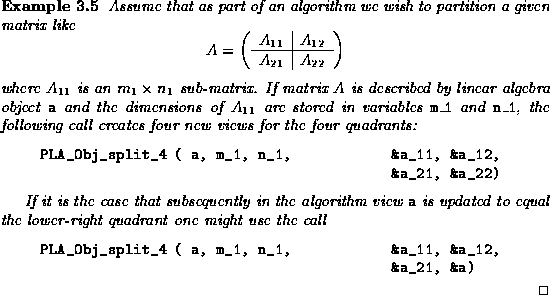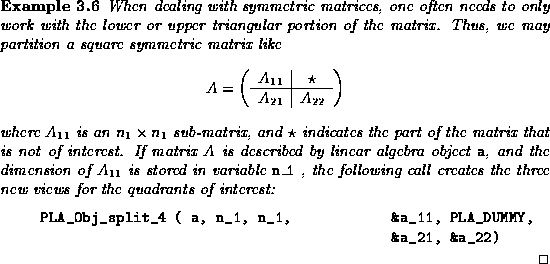
In later chapters, we will see that frequently it becomes convenient to partition a given matrix, A , into four quadrants. The appropriate views can be simultaneously created by calling place HR here

![]()

place HR here The order of the output parameters was chosen specifically to make the call self-documenting, as shown in the subsequent example. Legal input object types for obj are all types except vector and projected vector. The input object type is inherited by the output objects. The constant
PLA_DUMMY can be used to indicate that a specific sub-view need not be computed.
The length and width typically equals the row and column dimension of the upper-left quadrant (when both are nonnegative integers). However, by choosing them to be positive and/or negative, the row and column dimensions of the different quadrants can be indicated, as summarized in the following table:

As in the PLA_Obj_view call, if the value of a parameter being passed for an output view is NULL, new space is allocated for the data structure that describes the new view. If it points to an old view, this view can be reused. It is legal for at most one of the output views to equal the input object, which is then updated.

